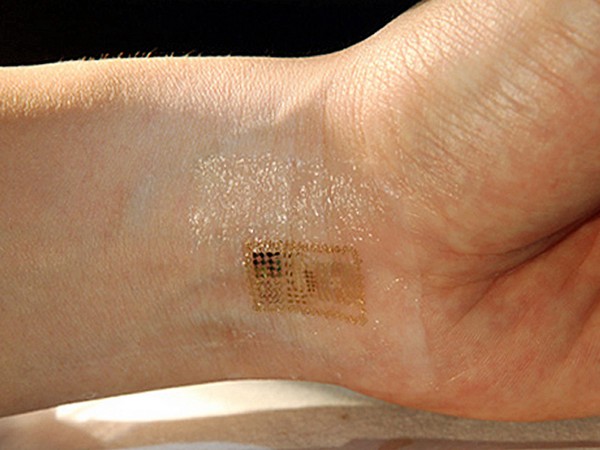Chameleon inspired new 'smart skin' changes colour in heat, sun
Scientists have developed a flexible smart skin that changes colour when it reacts to heat and sunlight while maintaining a near-constant volume.

- Country:
- United States
Scientists have developed a flexible smart skin that changes colour when it reacts to heat and sunlight while maintaining a near-constant volume. The study was published in the journal 'ACS Nano'.
"Watching a chameleon change colours gave me the idea for the breakthrough," said first author Yixiao Dong. "We've developed a new concept for a colour-changing smart skin, based on observations of how nature does it." Besides chameleons, many other creatures have evolved the ability to change colour. The stripes on a neon tetra fish, for example, turn from deep indigo to blue-green when they swim into the sunlight.
The colouration in these organisms is not based on pigments, but on tiny particles in a repeating pattern, known as photonic crystals. To mimic chameleons and create artificial smart skin, scientists have experimented with embedding photonic crystal arrays into flexible, water-containing polymers, or hydrogels.
Expanding or contracting the hydrogel changes the spacing between the arrays, resulting in a colour change. The problem, however, is that the accordion-like action needed to generate a visible change in hue causes the hydrogel to significantly grow or shrink in size, leading to structural instability and buckling of the material.
"No one wants a camouflage cloak that shrinks to change colour," noted Khalid Salaita, senior author of the paper. In close-up, time-lapsed images of the chameleon changing hues, Dong noticed that the arrays of photonic crystals did not cover the entire skin but were spread out within a dark matrix. As the photonic crystals turned different colours, these patches of colour remained the same distance apart.
Dong hypothesised that the skin cells making up the dark matrix somehow adjusted to compensate for the shifts in the photonic crystals. "I wondered if we could design something similar -- a composite structure of photonic crystal arrays embedded into a strain-accommodating matrix," said Dong.
The researchers used magnets to arrange patterns of photonic crystals containing iron oxide within a hydrogel. They then embedded these arrays into a second, non-colour-changing hydrogel. The second, springy hydrogel was mechanically matched to the first hydrogel to compensate for shifts in distances between the photonic crystals. When heated, this strain-accommodating smart skin (SASS) changes colour but maintains a near-constant size.
Dong also tested the material in sunlight, fabricating SASS films into the shape of a fish, in homage to the neon tetra, as well as into the shape of a leaf. When exposed to natural sunlight for 10 minutes, the SASS films shifted from orange to green, without changing in size. "We've provided a general framework to guide the future design of artificial smart skins," Dong said. "There is still a long way to go for real-life applications, but it's exciting to push the field another step further." (ANI)
(This story has not been edited by Devdiscourse staff and is auto-generated from a syndicated feed.)
- READ MORE ON:
- scientists
- researchers
- No one










